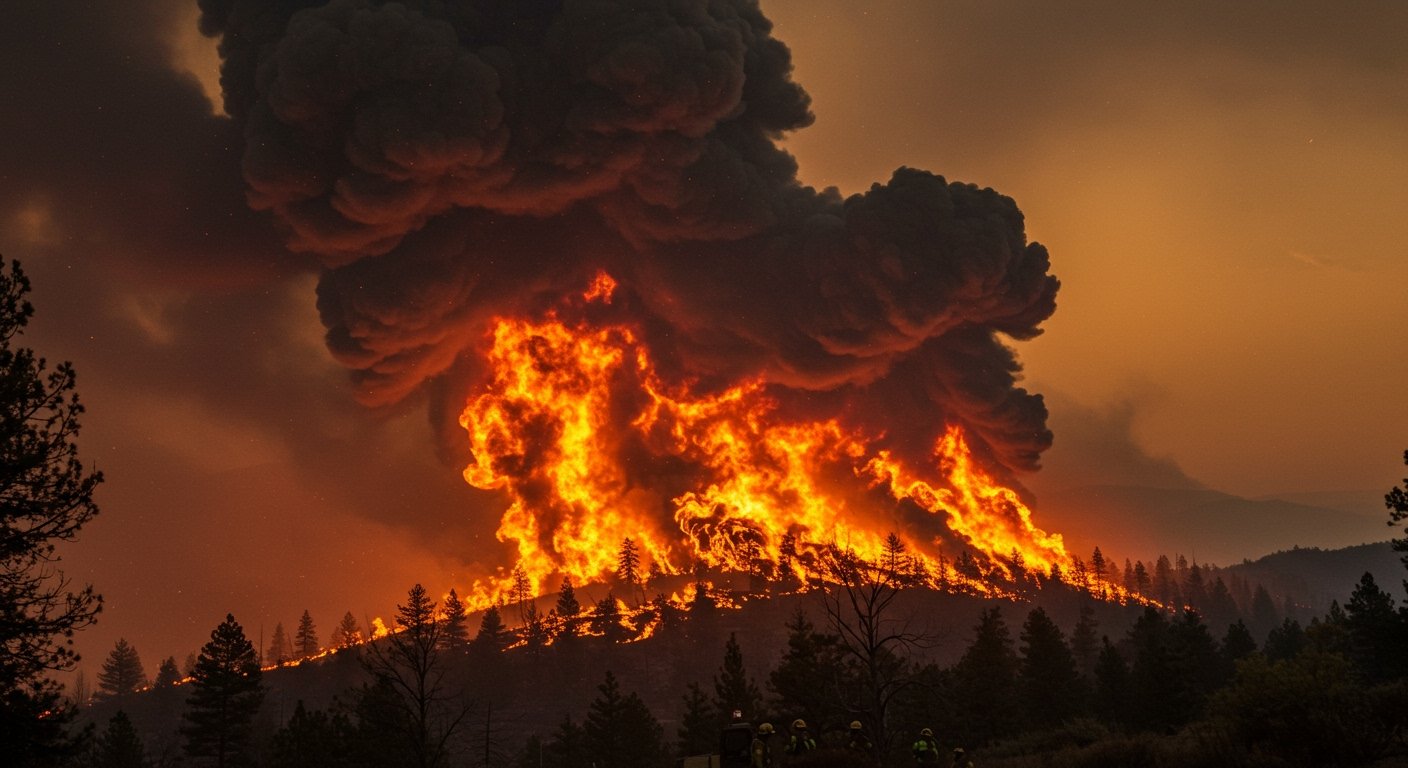CENTRAL CALIFORNIA – A rapidly intensifying wildfire in Central California has become the state’s largest of the year, consuming over 35,000 acres and prompting immediate evacuation orders and warnings. The blaze, dubbed the Madre Fire, ignited Wednesday within the Los Padres National Forest, a sprawling, nearly two-acre federally managed land area located approximately 100 miles north of Los Angeles.
Rapid Expansion and Challenging Conditions
The U.S. Forest Service reported that the fire exhibited “exponential growth in less than 24 hours,” driven by adverse weather conditions, challenging terrain, and abundant fuel sources. By Thursday, the fire’s footprint had surged to a staggering 35,530 acres, marking a dramatic and concerning expansion.
The rapid spread has posed significant challenges for firefighters and authorities, underscoring the volatile nature of wildfires under current environmental conditions. The combination of dry vegetation, wind patterns, and topography has allowed the flames to advance quickly across the landscape.
Emergency Response and Coordination
The escalating threat has necessitated a coordinated, multi-agency response. Firefighting efforts are being led by the U.S. Forest Service, with substantial support from the California Department of Forestry and Fire Protection (Cal Fire). Cal Fire has deployed extensive air and ground resources to the scene to combat the blaze alongside federal personnel.
Governor Gavin Newsom’s office confirmed that the state is operating in a “Unified Command” structure with federal and local partners. This collaborative approach brings together agencies such as the Bureau of Land Management and the San Luis Obispo County Sheriff’s Office to streamline decision-making, resource allocation, and operational strategy across different jurisdictional boundaries. The Unified Command ensures a cohesive effort in managing the complex incident.
Impacts on Communities and Infrastructure
The Madre Fire’s rapid progression has directly impacted residential areas and infrastructure in nearby San Luis Obispo County. Authorities have issued mandatory evacuation orders and warnings for specific communities deemed to be at immediate risk. Additionally, sections of highways have been closed to ensure public safety and facilitate access for emergency vehicles.
As of the latest reports, the fire is actively moving toward state areas, raising concerns for broader impacts beyond the initial federal forest lands. The flames are currently threatening 50 structures within the fire’s path. Fire personnel are working diligently to establish containment lines and protect lives and property in the affected regions.
Containment Efforts and Current Status
Despite the aggressive nature of the fire, crews are making initial headway on containment. Cal Fire reported that the Madre Fire is currently 5% contained. Achieving containment is a critical phase of wildfire management, involving building barriers – often using bulldozers, hand crews, or backfires – to stop the fire’s spread.
Authorities have confirmed that there have been no known injuries or damage to structures reported thus far, a testament to the timely evacuation efforts and the work of first responders. However, the situation remains dynamic and potentially hazardous.
Secondary Effects: Smoke Dispersion
The scale of the Madre Fire has resulted in significant smoke production. The National Weather Service has reported that smoke from the blaze is spreading over adjacent areas, specifically Santa Barbara and Ventura Counties. Air quality advisories may be issued in these regions as smoke plumes drift, potentially impacting residents with respiratory sensitivities.
Cause Under Investigation
The precise cause of the Madre Fire remains under investigation. Fire investigators are working to determine how the blaze started, a standard procedure for significant wildfires to help prevent future incidents and inform fire management policies. Until the investigation is complete, officials have not released details regarding the ignition point or potential factors involved.
The Madre Fire serves as a stark reminder of the ongoing wildfire challenges facing California, particularly in a year marked by dry conditions in many areas. Firefighting agencies and communities remain on high alert as the fire continues to burn across the varied landscape.





